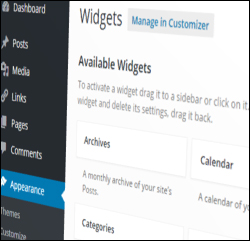 As we’ve explained in this post, one of the many benefits of using WordPress is that you can easily add content, enhance your site’s functionality, or redesign the layout of your site without web coding knowledge required.
As we’ve explained in this post, one of the many benefits of using WordPress is that you can easily add content, enhance your site’s functionality, or redesign the layout of your site without web coding knowledge required.
WordPress allows you to quickly and easily add, delete, and reorganize various blocks of content on your website’s sidebar menu (or header and footer sections, depending on your theme) using widgets.
Once you know how to use widgets, you can easily add things to your site like:
- website page list
- blog categories
- post archives
- custom menus
- links to external sites
- links to recent posts
- user comments
- advertisements
- client testimonials
- polls & surveys
- RSS content
- shopping cart information
- product images
- twitter feeds
- display widgets from other sites (e.g. Amazon)
- administrative forms (e.g. login, register, etc.)
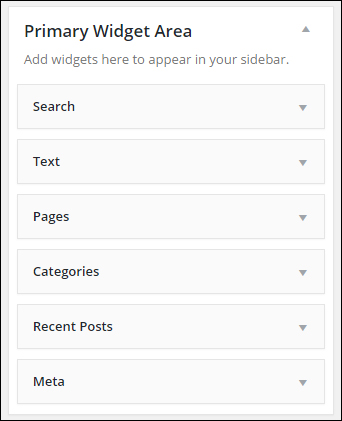
(WP widgets make managing and using WordPress easier)
To learn more about what WordPress widgets are, how widgets work and why widgets can make managing your site easier, go here:
In this tutorial series we teach you how to use and configure a number of commonly-used WordPress widgets.
Using WordPress Widgets
What You Need To Know First
Before we get into configuring and using widgets, it helps to first review some of the basics about using widgets:
Most WordPress Themes Support Widget-Ready Areas
Most WordPress themes support widgets and provide built-in widgetized sections in the theme’s layout where widgets can be added to, such as the sidebar, header area, and footer. Depending on the theme installed on your site, widgets can sometimes also be found in the content area …
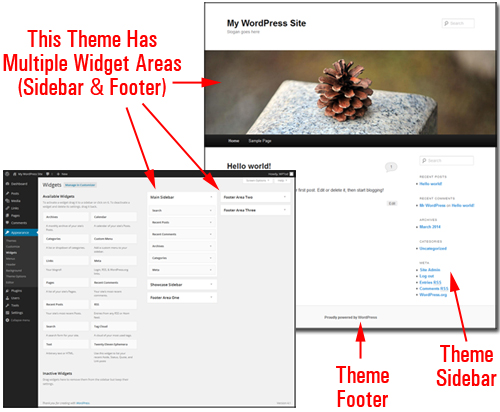
(Many WP themes offer users multiple widgetized sections)
These widget-ready layouts correspond to a feature inside the Widget management area called “Widget Areas” …
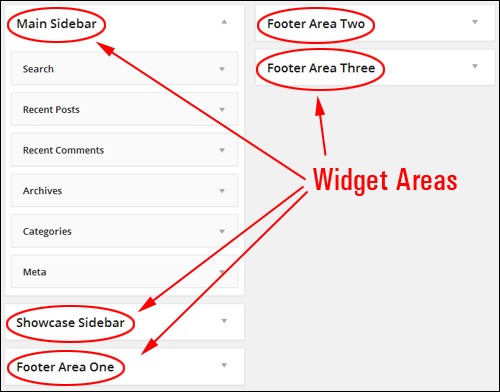
(Widget Areas)
Widgets Panel
The Widgets section displays all the widgets that you currently have available.
On the right-hand side of the window, you can see all “active” widgets …
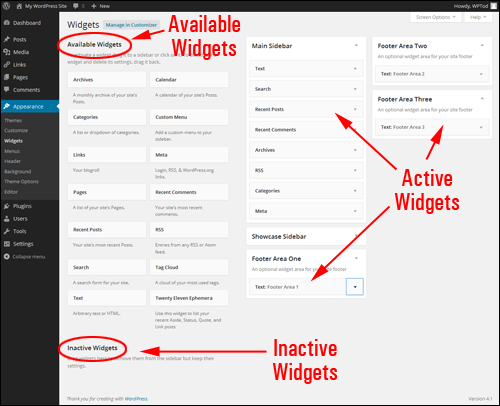
(Widgets can be activated or deactivated with drag & drop ease)
Available widgets can be made Active or Inactive by dragging-and-dropping items to different sections of the widgets screen.
Widgets dragged from the Available Widgets section to widget areas like the sidebar, footer, etc. become active and available for use on your site.
Your Widgets panel also includes an Inactive Widgets section that lets you remove any widgets that you no longer want on your site. Inactive widgets retain their pre-configured settings.
Reorganize Widgets With Drag & Drop
You can easily insert, activate, deactivate, reorder and remove things using widgets just by dragging and dropping items in the Widgets section …
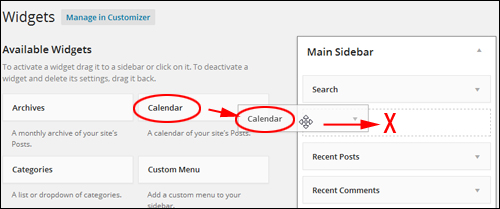
(Rearrange widgets on your WordPress site using drag-and-drop)
You can also easily rearrange your theme’s layout by dragging and dropping widgets.
For example, in the image below, the widgets have already been configured to display things like:
- An opt-in form,
- A contact support banner, and
- A ‘click to call’ section from a widgetized plugin (i.e. a WordPress plugin with an accompanying widget) …
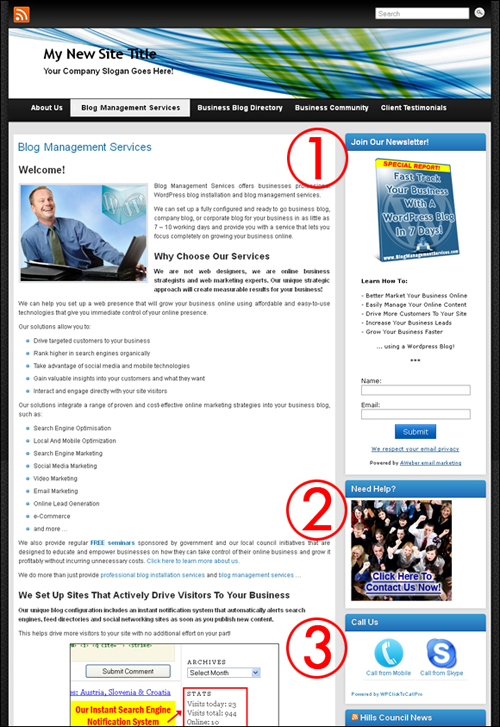
(Widgets control how certain features appear on your WordPress site)
If we take a look inside the example site’s Widget area, you will see that these features display on the site in exactly the same order as their corresponding widgets have been arranged in the active widget screen …

If we reorganize the above widgets in the Main Sidebar Widget Area by dragging and dropping some things around …
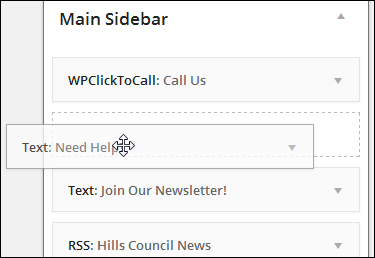
(Drag and drop to rearrange widgets in the widget area)
The widgets have now been reorganized in your sidebar …

As you can see, this instantly reorganizes the order of items in the sidebar.
Reorganizing sidebar elements using widgets can help improve your site’s user experience.
Note in the screenshot below that the ‘click to call’ feature (3) is now at the top of the sidebar, and the support banner (2) can now be found above the newsletter opt-in form (1) …
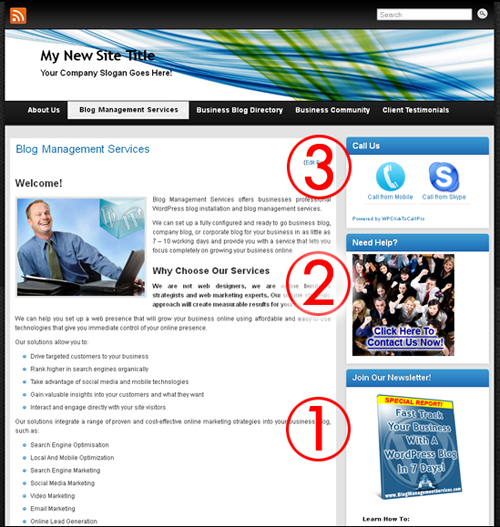
(Reorganize sidebar layout with widgets to improve visitor experience)
Removing Widgets From Your WordPress Sidebar
Removing widgets from your WordPress sidebar section is really easy.
For example, let’s remove the Search widget from the sidebar …
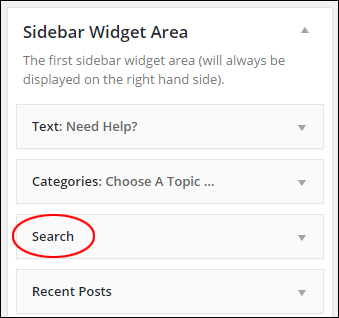
(WordPress Search widget)
To remove an active widget, either open up the widget and click the Delete link …
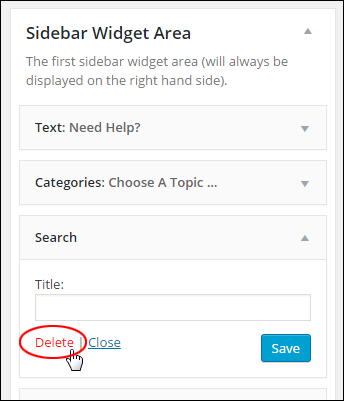
(Deleting your WP widget)
Or just drag the widget out of the Active Widgets area and drop it into the Inactive Widgets area …
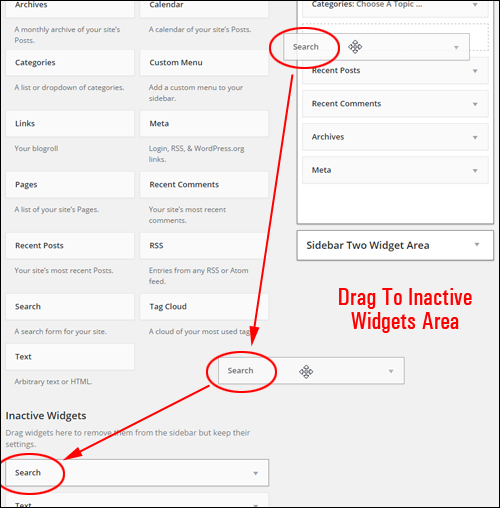
(How to remove a WordPress widget)
Repeat this process for any other widgets you want removed from your sidebar. You can always reinstate widgets by moving them back into the active widgets area.
Widget Settings
Most widgets can be customized. This can include things like hiding information from users (but allowing access to registered users), displaying additional forms, fields, or information, specifying dimensions of sidebar images, videos, etc.
Click on the little triangle in the corner of a widget to expand the item …
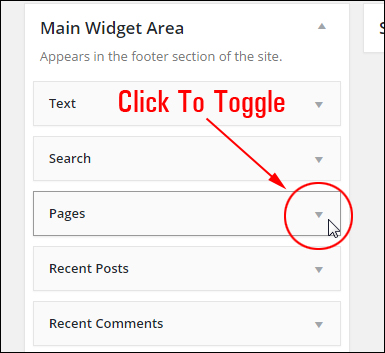
(Toggles expand/collapse widget settings)
When the widget expands, you can change and save your settings, click Delete to delete your widget from the “Active Widgets” section, close the widget, or click on the triangle to collapse the widget …
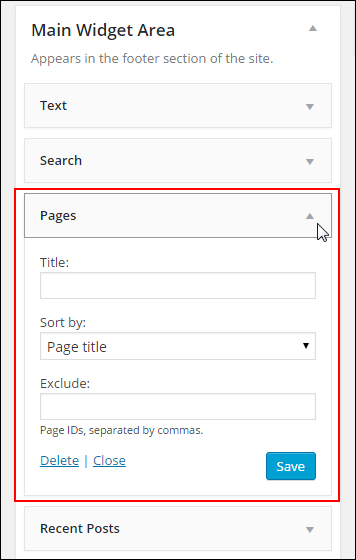
(Widget settings)
![]()
Some widgets give you little to no configurable options, or they may only allow you to add something like an optional title …
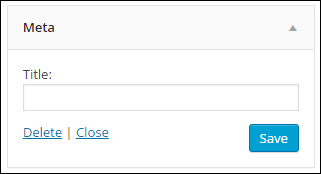
(Some widgets give you little to no customization)
Preview Widgets
Depending upon which theme you have installed on your site, you’re also able to preview any changes live without actually making changes to your site. This way, you can be sure that you like the customized edits before making any permanent changes to your site.
Widget management is a great feature of WordPress. You can work in preview mode inside the WordPress Theme Customizer screen (Appearance > Customize) and see how your widget content will appear prior to publishing changes (to avoid making mistakes), or configure widgets on the fly using the Widget editor area.
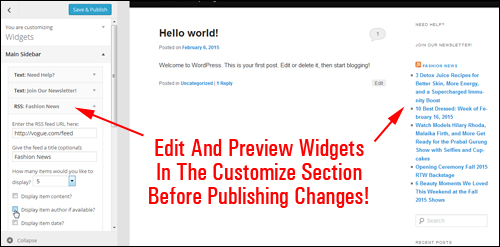
(Edit widgets in the Customize feature)
When viewing your site on the front-end just calick the Customize link in the toolbar …
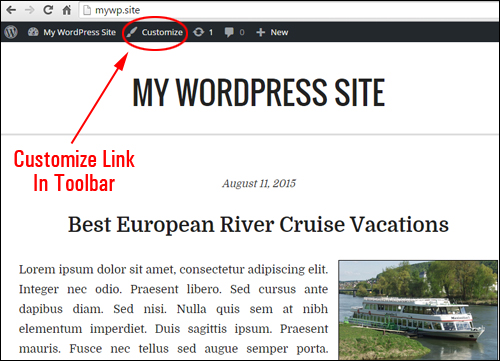
(Customize your site quickly)
This brings you to the Customizer screen in the back-end.
You can do several edits, modifications and adjustments to widgets in preview mode (like adding, removing and moving widgets around), and see all changes in real time. If you are happy with the results, click the “Save and Publish” button and your changes will then be instantly updated and made visible on the blog’s frontend.
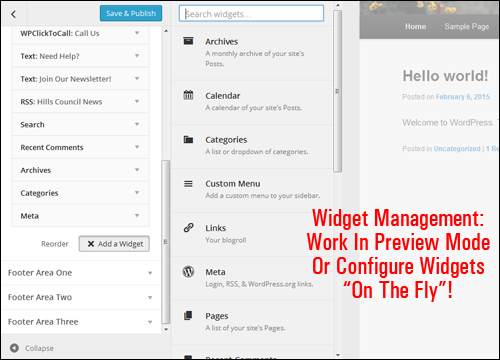
(Widget management – configure widgets on the fly!)
Once your changes have been saved, your new settings will automatically be displayed on your site.
![]()
Since the WordPress theme you use affect how elements display on your site, we recommend installing the theme first before configuring widgets.
Also, remember to use the Customizer feature to preview your changes. This will save you from having to keep two browsers open while you go through this tutorial.
Now that you know the basics of using widgets, let’s configure a number of frequently-used widgets in WordPress.
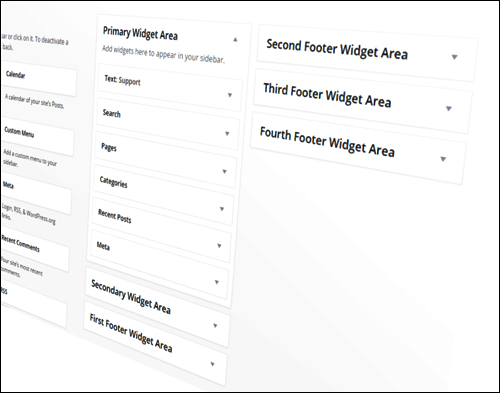
***
This is the end of part 1 of this tutorial series about using Widgets.
To view Part Two, click this link:
***
"These tutorials have so much information and are easy to understand. If you use WordPress or plan to in the future these will help you with everything you need to know." - Valisa (Mesa, Arizona)
***